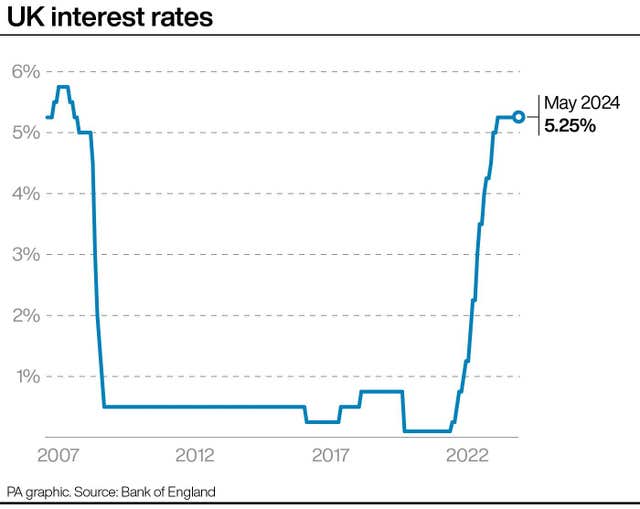
Growth across the private sector slowed in May, though economists were buoyed by early signs of cooling services sector inflation.
The fresh data showed that the UK’s economic recovery from the mild recession seen at the end of 2023 lost momentum this month, according to experts.
On Thursday, the closely watched S&P Global/CIPS flash UK purchasing managers’ index (PMI) reported a reading of 52.8 in May, down from 54 in April.
The flash figures are based on preliminary data. Any score below 50 indicates that activity is contracting, and any score above means it is growing.
Chris Williamson, chief business economist at S&P Global Market Intelligence, said: “The survey data are consistent with gross domestic product rising by around 0.3% in the second quarter, with an encouraging revival of manufacturing accompanied by sustained, but slower, service sector growth.”
Activity in the services sector continued to grow, but at a slower rate than last month. The index score was 52.9 in May, versus 55 in April.
The slowing growth is a bad sign for Prime Minister Rishi Sunak’s Conservative Party, which yesterday kicked off its General Election campaign based on a pitch that the UK’s economy is growing.
Businesses reported the softest increase in average selling prices for more than three years this month.
However, experts were encouraged by slowing input cost inflation, which fell to its lowest level in seven months, after a sharp rise in April.
Input costs are those associated with creating business’s products and services.
Services sector inflation, a key gauge of domestic price pressure, has remained stubbornly high in recent weeks.

Data from the Office for National Statistics on Wednesday showed services inflation at 5.9% in April, down from 6.0% in March.
But today’s survey indicates that trend will reverse in the coming months.
The indicator has been cited as a key sticking point for Bank of England economists when deciding whether or not to lower the UK’s base interest rate, with most preferring to wait for it to drop before opting to cut rates.
And a temporary surge in wage-related cost growth in April, driven by the introduction of a higher national living wage, showed signs of cooling in May, according to the PMI data.
Meanwhile, manufacturing output rebounded into growth after a slight decline last month, recording a two-year high index score of 52.7.
Mr Williamson said that today’s reports of cooling of services inflation is “welcome news… which is needed to open the door for the Bank of England to start cutting interest rates”.
He added: “Firms are also reporting that strong competition is limiting their scope to raise prices, especially in the face of weakened demand due to the elevated cost of living.
“With companies now reporting the slowest price growth in over three years, and headline inflation falling close to target, the PMI data support the view that the Bank of England will start cutting interest rates in August providing the data continue to move in the right direction over the summer.”

Enjoy the convenience of having The Sunday Post delivered as a digital ePaper straight to your smartphone, tablet or computer.
Subscribe for only £5.49 a month and enjoy all the benefits of the printed paper as a digital replica.
Subscribe